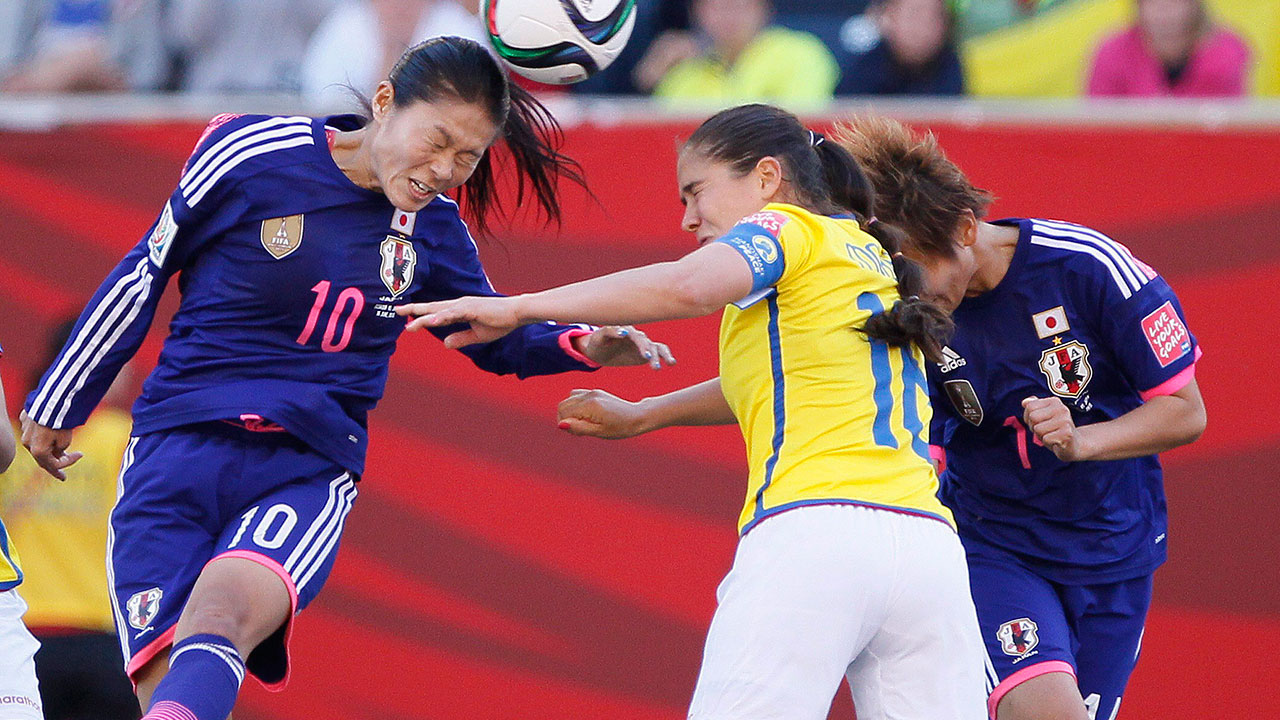WINNIPEG — Japan’s national women’s soccer team is not an offensive juggernaut. It never has been. But at the 2011 Women’s World Cup in Germany, which it won, it scored six times in the group stage and six times more in the knockout rounds.
Nahomi Kawasumi and Aya Miyama provided meaningful contributions on the attacking side of the ball throughout that tournament, and midfield maestro Homare Sawa found the back of the net on five occasions and won both the Golden Boot and Golden Ball.
The INAC Kobe Leonessa playmaker was at the peak of her powers, and Sawa’s display that summer was so dominant it lifted Nadeshiko Japan to a first major title.
After flirting with retirement Sawa committed to playing the 2015 World Cup in Canada, although, at 36, she simply isn’t the player that bossed the centre of the park four years ago.
That’s not to say she doesn’t still ooze class.
On Tuesday in Winnipeg, Sawa was one of the few of her countrywomen to put in a truly zealous performance against Ecuador — a match in which her side dominated territorially but could only win by a 1-0 margin.
Never the fastest player on the pitch, she once again picked out her teammates with quick, accurate passes, and her positional sense was evident as well.
And she battled.
A first-half duel with an opposing midfielder left her with her knees planted into the turf at Investors Group Field; a late collision with Katherine Ortiz had her favouring her right ankle, which the defender caught with a studs-up challenge.
She played on, completing her first full match of the competition.
That Japan manager Norio Sasaki has so closely monitored Sawa’s playing time in Canada speaks to the importance of his star player to the overall setup — importance none of his other players have so far been able to approach, at least where offence is concerned.
The holders have scored just three times from open play at this World Cup, and the trio of goals have come against 53rd-ranked Cameroon and 48th-ranked Ecuador. At times, despite dominating large swaths of play, they haven’t even looked like scoring.
Such was the case on Tuesday, when Yuki Ogimi’s fifth-minute opener proved the only goal of a match that, on the balance, should never have been as close as it was.
That said, full credit to La Tricolor, who successfully reorganized themselves after being outgunned a combined 16-1 by Cameroon and Switzerland.
Captain Ligia Moreira, in particular, was impressive in defence for the South Americans — her early block on Shinobu Ohno preventing a second Japan goal and further interventions in the 44th and 71st minutes keeping her side in the contest.
Ortiz and Denise Pesantes, who tracked back admirably throughout the encounter, put in vital shifts in front of standout goalkeeper Shirley Berruz as well.
But the story at the final whistle should never have been a spirited Ecuadorian performance, which it was, but rather a sputtering Japanese offence finally roaring into gear.
That didn’t happen, and while Sawa cannot be faulted for the underwhelming display, her country no longer seems to put the same kind of fear into opponents as it did in Germany and at the 2012 Olympic Games.
Next up for Japan is a Round-of-16 encounter against one of the Netherlands, Colombia, England, France or Mexico, and based on what Japan have shown so far at this competition they are by no means shoo-ins for the quarterfinals.


